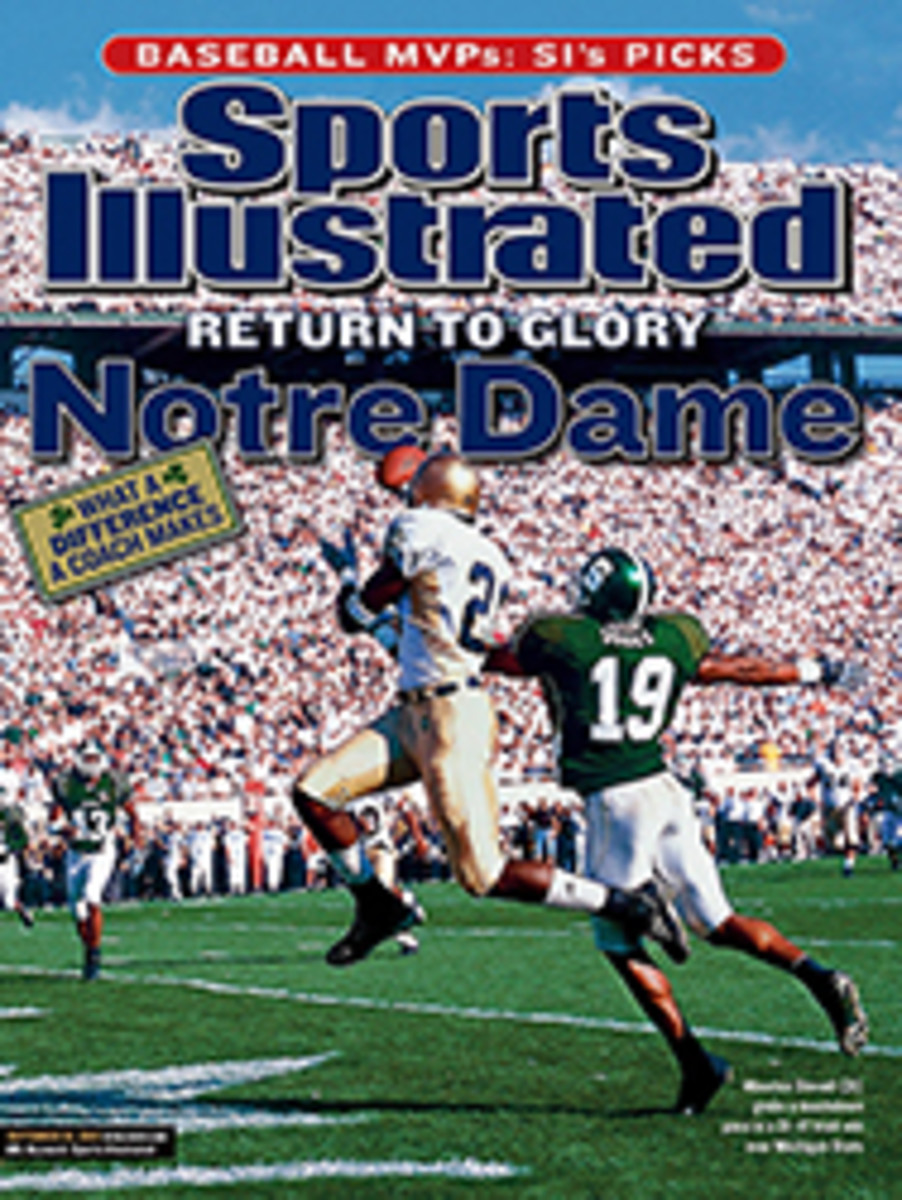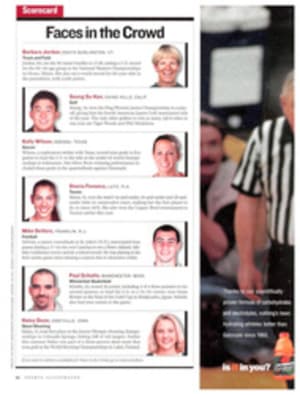
Bob Hayes (1942-2002) He brought Olympian speed to the NFL, and it changed the face of defensive football, but there were demons in life that he couldn't outrun
They followed him into the NFL like rats following the Pied Piper.
Olympic sprinters and hurdlers were handed a uniform and told to
catch the ball and run away from people, just like Bob Hayes did.
Speed is what Hayes brought into the league in 1965, more speed
than anyone had ever seen on a football field. And when the rest
of the NFL saw how he stretched defenses and forced them to go to
all sorts of zones to try to stop him, general managers pored
over copies of Track & Field News and sent out their invites.
Olympic sprint champ Jimmy Hines got a shot in Miami. John Carlos
and Tommie Smith washed out with the Eagles and the Bengals,
respectively, after the Mexico City Games. And Harvey Nairn, an
NAIA hurdles champ, spent time with the Jets. (The raw speed that
Nairn flashed on one play in an exhibition game--he blew by Lions
cornerback Lem Barney...and then dropped a pass--was enough to
earn him paychecks for two years as a member of the Jets' taxi
squad.) Everyone wanted another Bob Hayes, the only man ever to
win an individual Olympic gold medal and a Super Bowl ring, but
there has never been another one.
It is October 1964, and the Olympic Games are under way in Tokyo.
Hayes, still in the first flush of victory after winning the
100-meter final in world-record-tying time (10.0), has just been
ushered into a small room where athletes await the medals
ceremony. He did a little hop-step across the room, stopped, put
his hands on his temples, looked upward and let out a big surge
of emotion: "Ooooh! Ooooh!" He did this for five minutes or so
before being called out to get his medal. I can't remember ever
seeing such pure joy in a human being.
Six days later Hayes lined up to run the anchor leg of the 4x100
relay. The American team was in fifth when he got the baton, a
few yards behind the pack, but Hayes pulled even with 30 meters
to go, shifted into overdrive and shot ahead of everyone with an
explosive burst that made the greatest sprinters in the world
seem sluggish. There are no official split times for relay races
that short, but writers from Track & Field News timed his leg at
8.6 on one watch, 8.8 on another. Yes, relay times in the 100 are
faster because of the running start, but an 8.8 over 100 meters
is still the equivalent of roughly 7.9 for 100 yards, and God
knows what for a football 40. No one had ever seen such a display
of speed. No one is likely to see one again.
Back in Dallas the Cowboys were licking their chops. In 1963 they
had drafted him in the seventh round as a future choice, used for
players who still had college eligibility. All that speed would
soon be theirs.
You never really know what misery might be in store for even the
most gifted athlete. Hayes went on to a distinguished 11-year
career in the NFL, averaging 20 yards per catch, scoring 71
touchdowns, making three Pro Bowl appearances and helping Dallas
win its first Super Bowl in 1972, but drug and alcohol problems
kept him out of the Hall of Fame. He died last week of
complications from prostate cancer, and heart and kidney
ailments, at the age of 59.
Hayes differed from the sprinters who would follow him into and
out of the NFL, because he was not merely a sprinter who happened
to play football. He was, as he liked to put it, "a football
player first, then a runner." There were lots of fast guys on
Jake Gaither's Florida A&M squad, and he'd shuffle them in and
out, align them in different formations. Hayes was listed as a
halfback, but he'd line up all over the place--on the wing, in the
slot, wherever he was needed.
People have said that his college career was only so-so, but he
was a starter at wide receiver in the 1965 College All-Star Game,
and the quarterback who started that game for his team, Roger
Staubach, would, in the years that followed, go on to launch many
deep strikes to Hayes for the Cowboys.
Hayes began to make his mark on the NFL as soon as he arrived: He
led the league with 21.8 yards per catch in his rookie season,
and he sustained that career average of 20 yards per reception, a
figure few players even approach nowadays for a single season.
The zone defense had existed in the NFL before his arrival, but
it was crude by today's standards, and Hayes could destroy that
kind of coverage the same way he did man-to-man alignments. So
coaches came up with a double zone to try to control him. A
cornerback would play him tight as he came off the line--in those
days defenders could do anything they wanted to a receiver,
except grab and hold--and another defensive back would pick him up
deep. Or coaches would assign the deepest defensive back, usually
the free safety, to make sure he stayed behind Hayes, which
opened up vast areas underneath. No other player caused that kind
of strategic overhaul of the defensive game.
That alone should have earned Hayes a spot in Canton, but in
1979, two years before he became eligible for enshrinement, he
was sentenced to five years in prison for selling narcotics; he
was paroled after serving 10 months. His alcohol and drug
problems were a shock to those who knew him. He was a decent,
forthright person with...well, major problems. But that was
enough to keep him out of Canton, even though, according to the
guidelines, a candidate should be judged solely on the basis of
his performance on the field.
By the 1990s he was no longer a modern Hall of Fame candidate. He
had been relegated to the Seniors pool, which can yield only one
candidate a year and sometimes produces none.
"The situation with Bob Hayes and the Hall of Fame is one of the
most tragic stories I've ever been associated with during my time
in professional football," said Tex Schramm, the Cowboys' former
president and general manager. But Schramm was a one-man
selection committee for the Cowboys' Ring of Honor, and he never
admitted Hayes. Jerry Jones, the team's owner since 1989, didn't
admit Hayes until last year.
I would run into Hayes during the hard times that followed his
stretch in prison. He was saddened by how his life had turned
out, but not bitter--he was the same modest person he'd always
been, with the same winning smile. And when I saw that smile, I'd
always remember him as he was on that October day in 1964, in
that little room in Tokyo, enjoying the most wonderful moment of
his life.
B/W PHOTO: BETTMANN-CORBIS [T of C] LONG GONE Bob Hayes flew through the Cleveland Browns on a 64-yard punt return in a 1967 playoff game (page 66).
COLOR PHOTO: JOE MCNALLY SPEEDING BULLET Hayes tied the world mark in the Olympic 100 in Tokyo.
COLOR PHOTO: PHOTOGRAPH BY WALTER IOOSS JR. BREAKING AWAY Hayes averaged 20 yards per catch and 11.1 yards per punt return during his 11 NFL seasons.
COLOR PHOTO: JAMES DRAKE COWBOY INJUSTICE Hayes won Olympic gold and a Super Bowl ring, but he was shunned by the Pro Football Hall of Fame.
HALL Worthy
The Seniors pool of potential Hall of Famers includes many
players who deserve to be inducted, according to SI's Paul
Zimmerman. Here are his top five.
1. BOB HAYES, Cowboys, 1965-74; Niners, '75. His speed forced
defenses to radically change pass-coverage schemes.
2. CLIFF HARRIS, Cowboys, 1970-79. Age 53. The first and the best
of the killer free safeties.
3. DAVE ROBINSON, Packers, 1963-72; Redskins, '72-74. Age 61.
First of the dominant size-and-speed outside linebackers.
4. RICH (TOMBSTONE) JACKSON, Broncos, 1966-72; Browns, '72. Age
61. Career was cut short by injury, but he was one of the great
pass rushers of all time.
5. TOMMY DAVIS, 49ers, 1959-69. Age 67. Has the second-best
career punting average in NFL history.

